
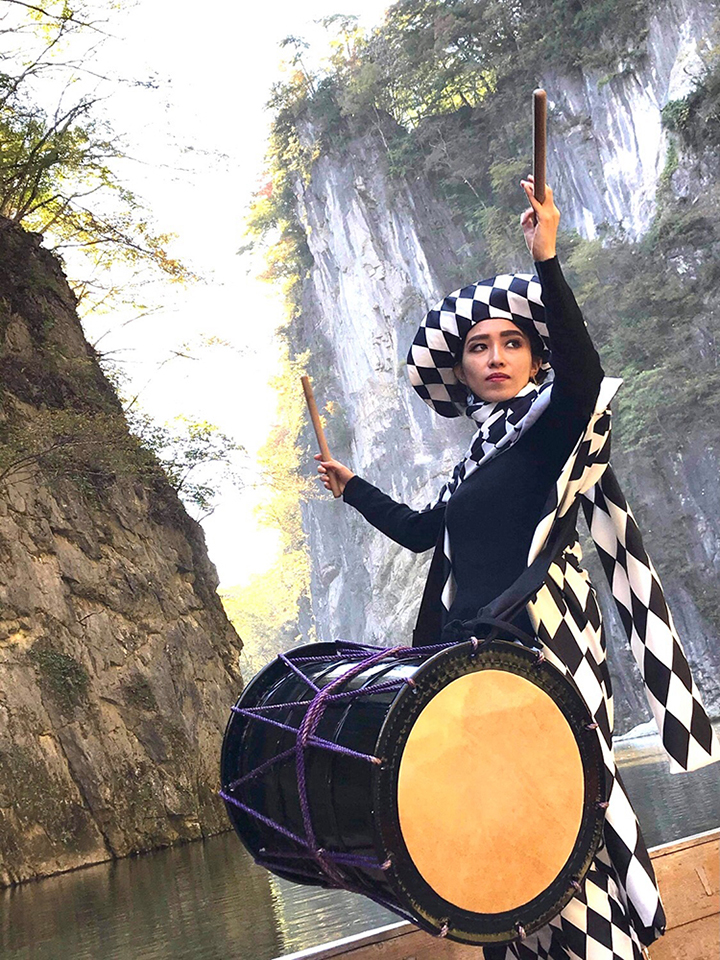
東京都出身。幼いころより和太鼓やピアノを習い、学者と芸術家の家系に育つ。ドイツ人と日本人の父の影響でクラッシックの音楽と、日本人の母の影響で日本の芸術に触れる。聖心インターナショナルスクール卒業と共に世界屈指の名門コーネル大学(ニューヨーク州、米国)に入学する。パーカッションアンサンブルに入団するが、翌年に和太鼓部を同級生と立ち上げ、中心プレイヤーとなり、音楽監督を務める。哲学学士取得。卒業後、日本に帰国し、22歳でプロの和太鼓集団に所属。23歳で独立し、ソロアーティストとしてのキャリアを開始。2013年には市川市文化振興財団、新人演奏家コンクールで優秀賞を受賞。全国各地の日本の民族舞踊(主に男踊り)も体得し、阿波踊りにおいては、高円寺阿波踊り連協会の江戸歌舞伎連に所属し、トップダンサーへと登る。
日本の和太鼓、和楽器、唄を組み入れ、どこか郷愁を感じさせながらも、新しい形のポップス音楽を製作している。 未来の人々にも楽しんでいただける100年以上残る音楽を創ることを目標にしている。和太鼓アンサンブルでの演奏や、様々な文化の音楽や様々な音楽のジャンル、アート、ダンス、演劇、ファッションなどでのコラボレーション、和太鼓のワークショップにも深く携わる。日本の風土から産まれた音を原点に和太鼓のみではなく箏、歌、ピアノ、そして日本の民族舞踊を取り込んだ独自の世界、音楽観は日本に留まらず、国外でも多くの人々を魅了し続けている。
Eva Kestner is a professional Taiko Drummer, Entertainer, Artist, and Educator.
Born in Tokyo, Japan, Eva was raised by a family of scholars and artists with mixed German and Japanese heritage. From a young age she learned how to play piano after her father introduced her to classical music, while she simultaneously learned Taiko after her mother introduced her to the Japanese arts. After graduating from the International School of the Sacred Heart in Tokyo she attended Cornell University in Ithaca, NY where she earned a B.A. in Philosophy. While attending Cornell, she joined the Cornell University Percussion Ensemble. The following year, she cofounded the Taiko drumming student organization called Cornell Taiko (YAMATAI) and was the lead drummer and musical director. After graduating from Cornell at the young age of 22, she returned to Japan and started performing professionally. She started her solo career a year later.
Eva is also trained in Japanese folk dance (with focus on male styles) and has a passion for the street dance, Locking. She joined an Awa dance team affiliated with the prestigious Koenji Awa Dance Association, and made her way to become one of the top female dancers in Japan.
Today, she brings Japanese taiko drumming and song to a brand new context of pop music and also performs with many distinguished artists, musicians, dancers, and Taiko drummers across multiple genres. Eva does not only perform using taiko, she also uses a number of other instruments that have a distinct flavour of the Japanese environment including Koto (Japanese Harp), Voice, and Piano. Eva also works in the fields of education and teaches taiko drumming workshops to both children and adults, and is also involved in humanitarian efforts such as raising awareness for the disabled.
Her music, dynamic performances, and selfless spirit continue to inspire not only her many fans,but all who witness her performances all over the world.
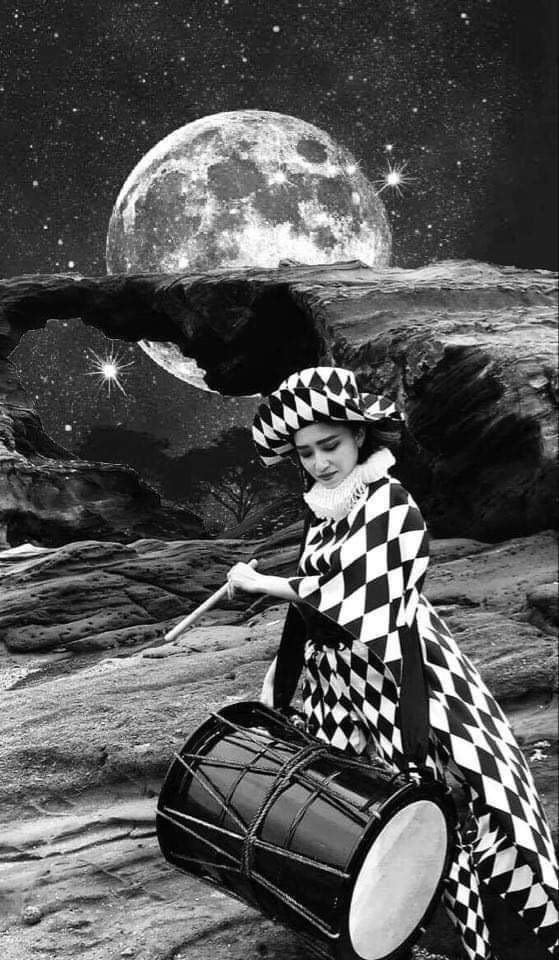
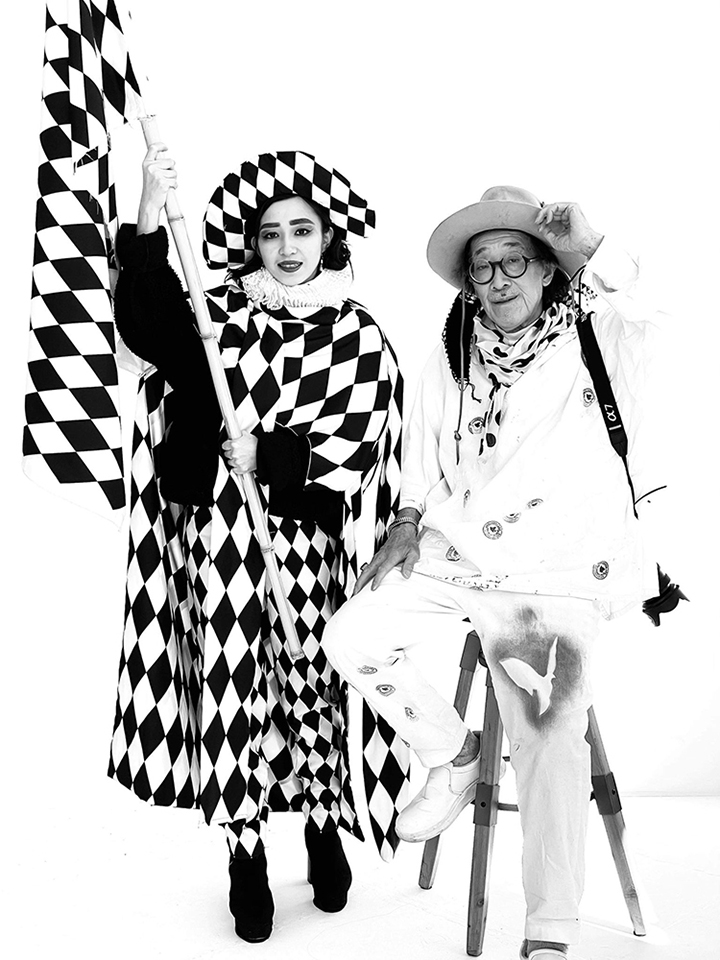
”愛と希望のハーレクイン”という新たな伝説的なキャラクターを写真家/アーティストのベンジャミン・リーとを作りあげてきました。ハーレクハーレクインはコメディア・デラルテに登場するとても重要な人物であり、愛と希望のシンボルに最も適しているパーソナリティーです。16世紀のはじめにイタリアの劇で演じられ、中世からルネサンスへ時代が開花した時に表れ、ピカソなどあらゆる芸術家のインスピレーションの対象になった、ルネサンスの申し子なのです。ハーレクインは不思議なキャラクターで、頭も良く、善人には優しく、悪人を敵にし、百の顔と性格を持ち、愛されざるを得ないキャラクターなのです。リー氏はピカソが描いたこの伝説的なキャラクターに着想を得て現代版のハーレクインを登場させることを決めました。なぜ今、ハーレクインなのか、以下、ドリアン助川氏の言葉を引用させて頂きました。
ーハーレクインの時代ー さっそうと現われ、主役を向こうに回した演技で舞台の印象をすっかり変えてしまうハーレクイン。変化のなかではハーレクインこそが主役だ。これまでの常識を蹴散らしながら、ハーレクインはその眼差しひとつで、新しい時間と空間を創造していく。 この混沌とした世も舞台なら、今、求められているのはハーレクインだ。風の吹いてくるところや、人の表情の奥にある哀しみ。そうした見えないものを見ているから、聞こえない言葉を聞いているから、突拍子もないことをしているように見えて、実はハーレクインが一番、人の心に寄り添っていたりする。世界を再構成する方法と、そのための歌を、ハーレクインは知っている。
ドリアン助川 詩人・作家・教授
リー氏がデザインした衣装を身に纏ったエヴァと共に日本各地や海外を訪れ、現代のハーレクインによる喜びと希望溢れる和太鼓演奏を披露しています。その出現は予測不能かつ神出鬼没なものですが、ハーレクインを望む誰の前にも現れる可能性を秘めており、それこそが私たちの未来に楽観的で明るい希望の光を届けてくれるものの象徴と言えます。
古典(太鼓、大鼓、小鼓)を仙堂新太郎氏、盧慶順氏に師事
日本の民族舞踊を小澤さと氏に師事
唄を近藤香林氏、末廣沙邏氏に師事
パーカッションを服部正美氏に師事
箏を仲林光子氏に師事
主な受賞歴:市川市文化振興財団 第26回新人演奏家コンクール 優秀賞
Eva sometimes appears as the iconic character, the Harlequin of Love and Hope, conceptualized and designed by photographer/artist Benjamin Lee. The harlequin is an important character from the Italian theater, Commedia dell’Arte, and a symbol of love, hope, and optimism. The character of the harlequin first appeared in Italian theaters during the beginning of the Renaissance. The harlequin has inspired many artists over the centuries, including Picasso, as seen in his paintings of the harlequin in the early 1900s. This mystical and clever character has many faces and personality traits, sends gifts to the good and fights the evil, but most importantly, you cannot help but love them. In these current difficult times, the harlequin should play a prominent role in the lives of people who need optimism and hope.
The Age of the Harlequin
by Durian Sukegawa, writer, poet, and singer
“The harlequin can seize the audience’s attention, draw their eyes to herself, and make the other characters on stage appear invisible. The harlequin can change the whole scene, shift the audience’s perception, and suddenly become the main character in but a moment. With merely her piercing gaze, she can imagine and create a new reality.
In these challenging times, what character is more desperately needed than the harlequin? The harlequin sees the true sadness beneath people’s smiling masks, can see what’s never been seen and can hear what’s never been heard before. Thusly is the harlequin so close to people’s hearts. The harlequin knows how to sing a song that makes the world a better and more magical place.”
Eva wears the costume and make surprise appearances anywhere in the world, where Eva uses her drums to play music full of hope and energy. The harlequin’s appearance is unpredictable and divine, but she has the potential to appear before anyone who wants to meet her, a symbol of optimism and a bright light of hope for our future.
Masters:
Shintaro Sendo (Noh Tsuzumi and Taiko)
Sato Ozawa (Japanese Folk Dance)
Karin Kondo and Sara Suehiro (Vocals)
Masami Hattori (Brazilian Percussion)
Mitsuko Nakabayashi (Koto (Japanese harp)
Awards:
Wins award of excellence at the Ichikawa New Artists Comepetition, 2013
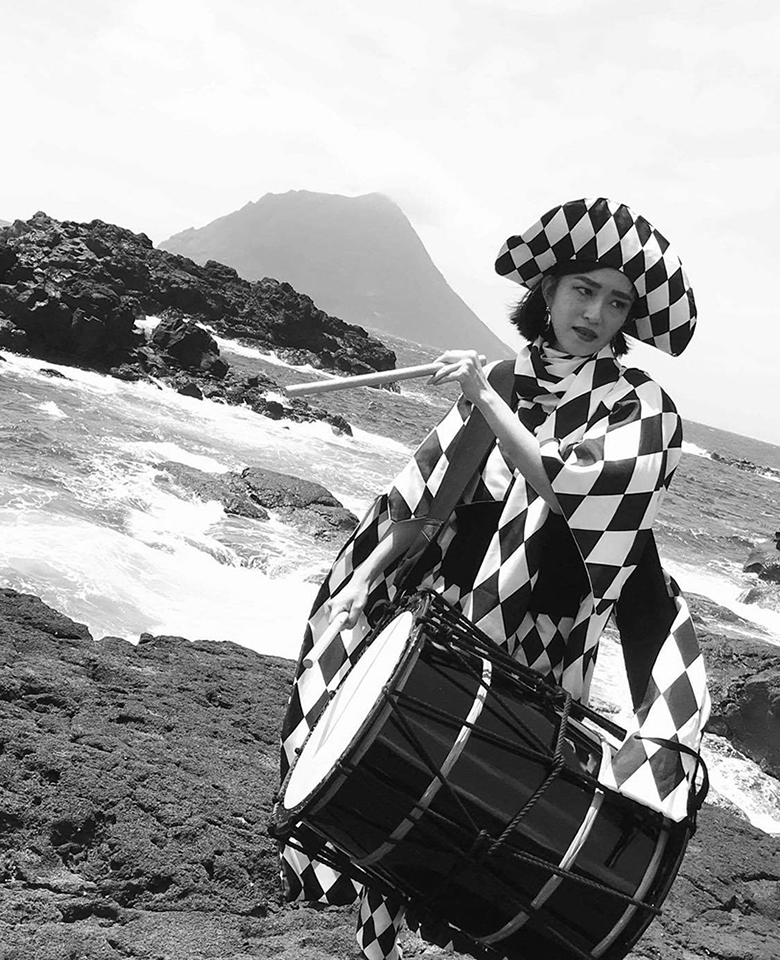 EVA KESTNER
EVA KESTNER EVA KESTNER
EVA KESTNER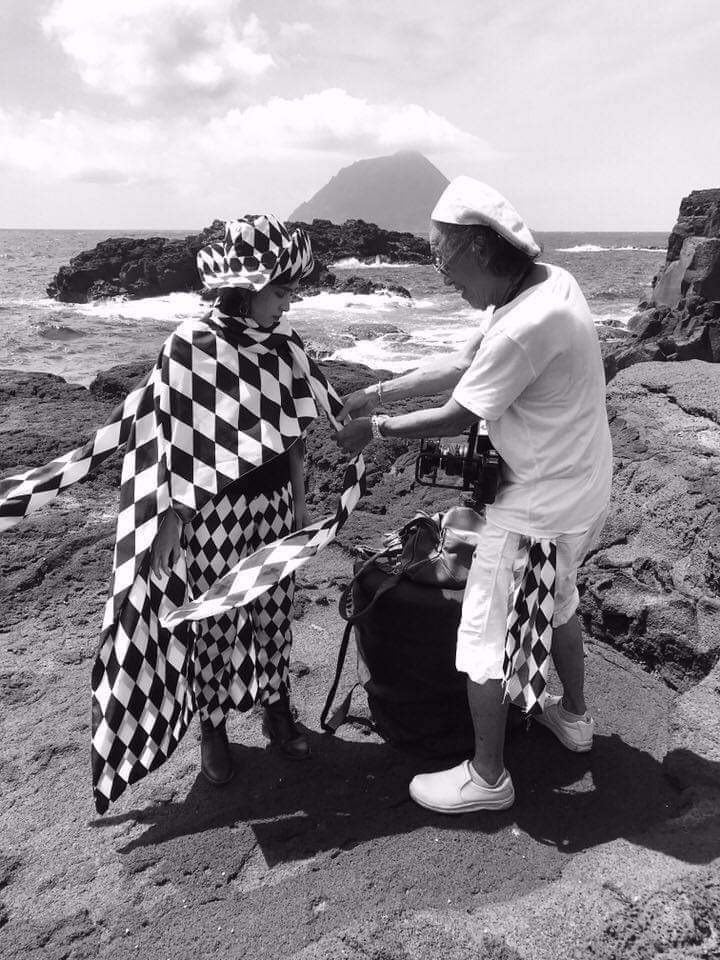 EVA KESTNER & BENJAMIN LEE
EVA KESTNER & BENJAMIN LEE EVA KESTNER
EVA KESTNER EVA KESTNER
EVA KESTNER EVA KESTNER
EVA KESTNER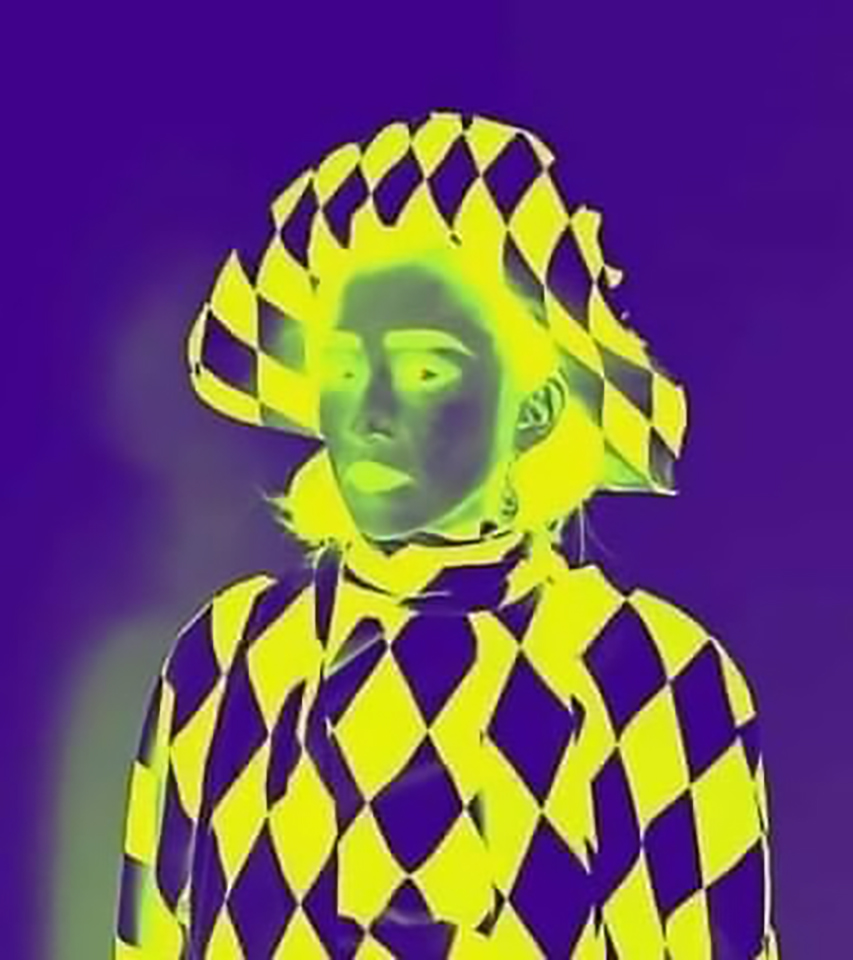 EVA KESTNER
EVA KESTNER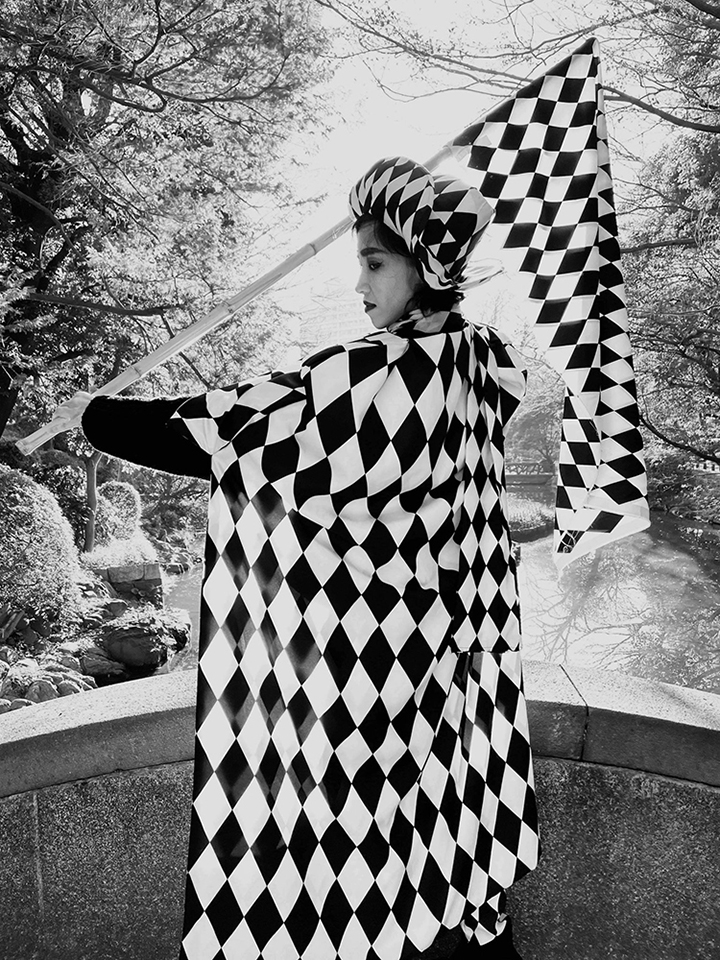 EVA KESTNER
EVA KESTNER EVA KESTNER
EVA KESTNER EVA KESTNER
EVA KESTNER EVA KESTNER
EVA KESTNER EVA KESTNER & BENJAMIN LEE
EVA KESTNER & BENJAMIN LEE EVA KESTNER
EVA KESTNER EVA KESTNER
EVA KESTNER EVA KESTNER
EVA KESTNER EVA KESTNER
EVA KESTNER